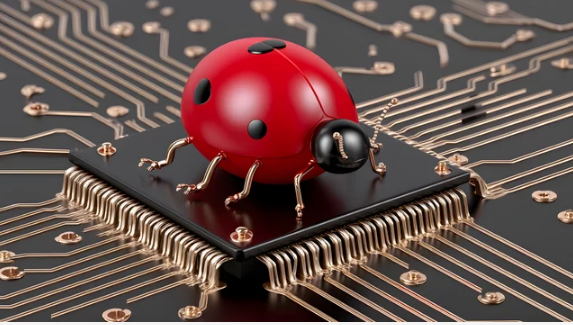Few things are more frustrating than trying to connect your device to the internet only to be greeted by the dreaded “IP Configuration Failed” message. This error prevents your computer, laptop, or smartphone from establishing a proper network connection, leaving you unable to browse the web, stream, or work online.
Fortunately, this issue is common and can often be fixed with some simple troubleshooting steps. In this guide, we’ll explain what causes the IP Configuration Failed error, how to resolve it on Windows, Mac, and mobile devices, and preventive measures to avoid it in the future.
What Does “IP Configuration Failed” Mean?
Every device that connects to a network needs a valid IP address—a unique identifier that allows communication between your device and the network. If the system cannot assign a proper IP address, you’ll encounter the IP Configuration Failed error.
This failure typically occurs when:
- The device cannot communicate with the DHCP server (the service that assigns IP addresses).
- Network settings are misconfigured.
- Drivers, firmware, or software are outdated.
- Security software or firewalls interfere with the process.
Common Causes of the Error
Before diving into the solutions, let’s explore the most frequent reasons behind the message:
- Incorrect DHCP Settings – Your device isn’t automatically receiving an IP address.
- Driver or Firmware Issues – Outdated or corrupted network drivers.
- Conflicting Static IP Address – Two devices on the same network trying to use the same IP.
- Router or Modem Glitches – Temporary issues with network hardware.
- Firewall/Antivirus Interference – Security tools mistakenly blocking access.
- Weak or Interrupted Connection – Poor Wi-Fi signals or faulty cables.
Fixing the “IP Configuration Failed” Error on Windows
1. Restart Your Router and PC
- Power cycle your router by unplugging it for 30 seconds.
- Restart your computer to refresh the network configuration.
2. Renew Your IP Address
Use Command Prompt to reset your IP:
- Press Windows + R, type
cmd, and hit Enter. - In the Command Prompt, type:
ipconfig /release
ipconfig /renew
- Restart your PC to apply changes.
3. Flush DNS Cache
Sometimes old DNS data causes conflicts. Run this command:
ipconfig /flushdns
4. Update or Reinstall Network Drivers
- Open Device Manager → Network Adapters.
- Right-click your Wi-Fi or Ethernet adapter → Update Driver.
- If that doesn’t work, uninstall the driver and restart your PC to reinstall it automatically.
5. Manually Configure IP Address
If automatic assignment fails, try setting one manually:
- Go to Control Panel → Network and Sharing Center → Change adapter settings.
- Right-click on your network → Properties → Internet Protocol Version 4 (TCP/IPv4).
- Enter a manual IP (e.g., IP:
192.168.1.50, Subnet:255.255.255.0, Gateway:192.168.1.1). - Use Google DNS:
8.8.8.8and8.8.4.4.
6. Reset TCP/IP Stack
Run the following command in Command Prompt (Admin):
netsh int ip reset
Restart your PC afterward.
Fixing the Error on Mac
1. Renew DHCP Lease
- Open System Settings → Network.
- Select your active connection → Advanced → TCP/IP.
- Click Renew DHCP Lease.
2. Set DNS Manually
- Go to Network → Advanced → DNS.
- Add Google DNS (
8.8.8.8/8.8.4.4) or Cloudflare DNS (1.1.1.1/1.0.0.1).
3. Reset Network Preferences
- Delete old Wi-Fi configurations from Library → Preferences → SystemConfiguration.
- Restart your Mac and reconnect to Wi-Fi.
4. Check Firewall
- Go to System Settings → Security & Privacy → Firewall.
- Disable temporarily to ensure it’s not blocking the network.
Fixing the Error on Mobile Devices
On Android
- Restart your phone and router.
- Forget the Wi-Fi network and reconnect.
- Set a static IP:
- Go to Wi-Fi settings → Modify Network → Advanced → IP settings → Static.
- Enter IP:
192.168.1.xxx(replace xxx with a number between 100–250).
On iPhone/iPad
- Go to Settings → Wi-Fi.
- Tap on your Wi-Fi → Renew Lease.
- If needed, configure DNS manually under Configure DNS → Manual.
When the Problem is Router-Related
If multiple devices show the same error, the issue is likely with your router or modem. Try:
- Restarting or resetting the router to factory settings.
- Updating router firmware.
- Checking if DHCP is enabled in the router’s configuration page.
Advanced Fixes for Persistent Issues
If none of the basic solutions work, try:
- Disable Proxy or VPN – Sometimes VPNs cause IP conflicts.
- Temporarily Disable Antivirus/Firewall – Check if they’re interfering.
- Replace Faulty Hardware – A damaged Ethernet cable or old router may be the culprit.
How to Prevent the IP Configuration Failed Error
- Keep your operating system, drivers, and router firmware updated.
- Regularly restart your router to refresh connections.
- Use reliable DNS servers (Google, Cloudflare, or OpenDNS).
- Avoid assigning duplicate static IPs across devices.
- Maintain good router placement for stable Wi-Fi coverage.
Final Thoughts
The IP Configuration Failed error can feel overwhelming, but in most cases, it’s simply a matter of refreshing your network settings, updating drivers, or reconfiguring your router. By following the step-by-step troubleshooting guide above, you can quickly get back online whether you’re using Windows, Mac, Android, or iOS.
If the problem persists across multiple devices, it may be time to contact your Internet Service Provider (ISP) for further assistance.
Also Read :
